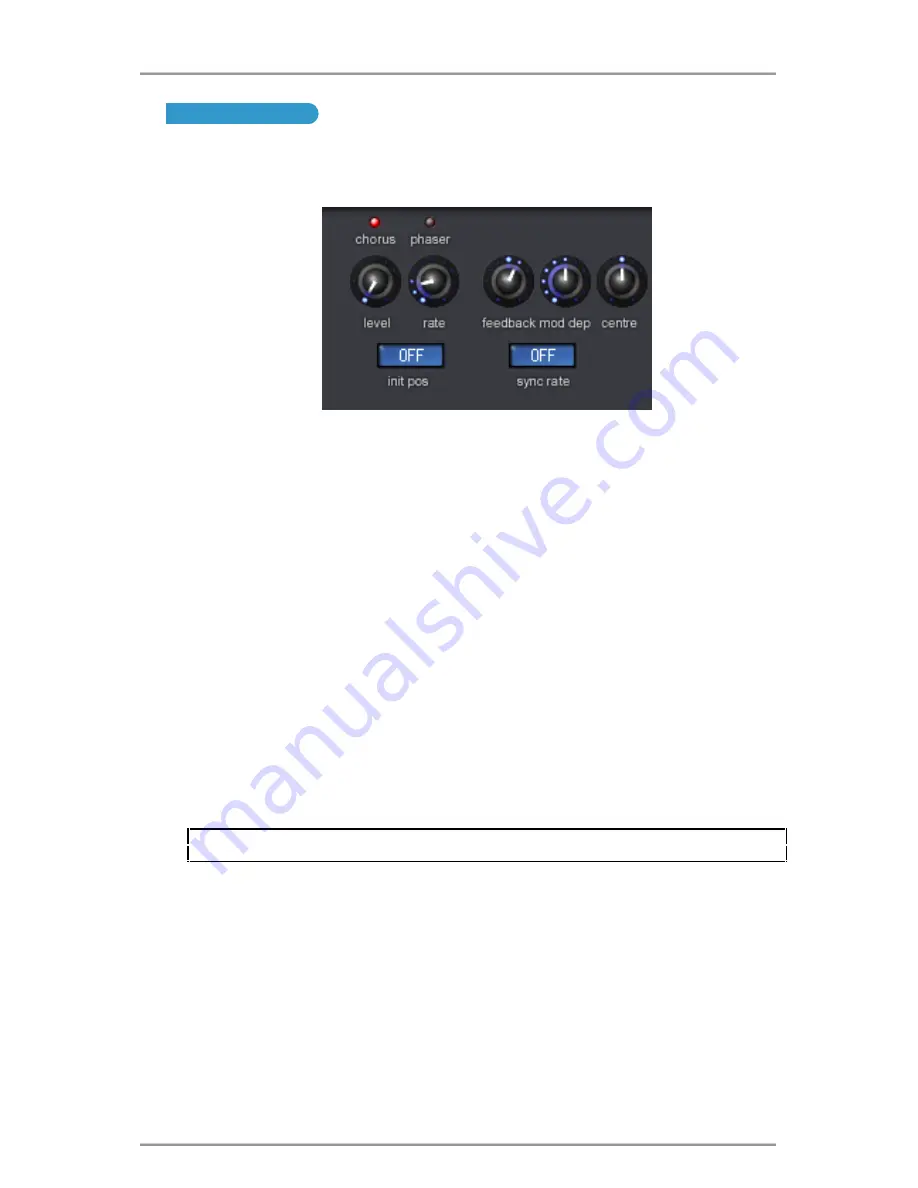
Chorus / Flange / Phaser
Chorus
This effect was originally designed to simulate the sound of many people singing together
(hence the name ‘chorus’) . Instrumentally, consider the sound of a 12 string guitar compared
to a 6 string guitar. The very slight detuning of the individual strings actually gives a richer
quality to the sound.
Chorus is an effect produced by mixing a continuously delayed version of the audio signal back
with the original. The timing of the delayed version is very small and is controlled by the
chorus’s own internal LFO (not to be confused with the two LFOs available on the V-Station’s
MAIN panel). The characteristic swirling chorus effect is the result.
The V-Station’s chorus is a stereo unit which adds width as well as depth to the sound.
The V-Station’s chorus is also capable of behaving as a phaser. The way a phaser works is in
fact entirely different to the chorus. A portion of the audio signal is split off and phase shifted at
certain frequencies. It is then mixed back with the original signal to generate the characteristic
swishing effect. The controls are:
L E V E L K n o b
Sets the amount of signal going to the chorus. As the control is turned clockwise, so you will
hear more chorus.
CHORUS / PHASER LEDs
Determines whether the V-Station’s chorus behaves as a standard chorus or as a phaser.
RATE Knob
Controls the rate or speed of the chorus effect. At very slow speeds (and with DEPTH and
FEEDBACK set fairly high) , the chorus can also be used as a flanger.
Note : The dedicated chorus LFO should not be confused with the two LFOs available on the
V-Station’s MAIN panel.
FEEDBACK Knob
Controls how much of the delayed signal is fed back to the input of the chorus generator. The
chorus effect benefits from low levels of feedback. When acting as a flanger or a phaser , the
effect often requires higher levels of feedback.
44
MAIN panel / Operation
















































